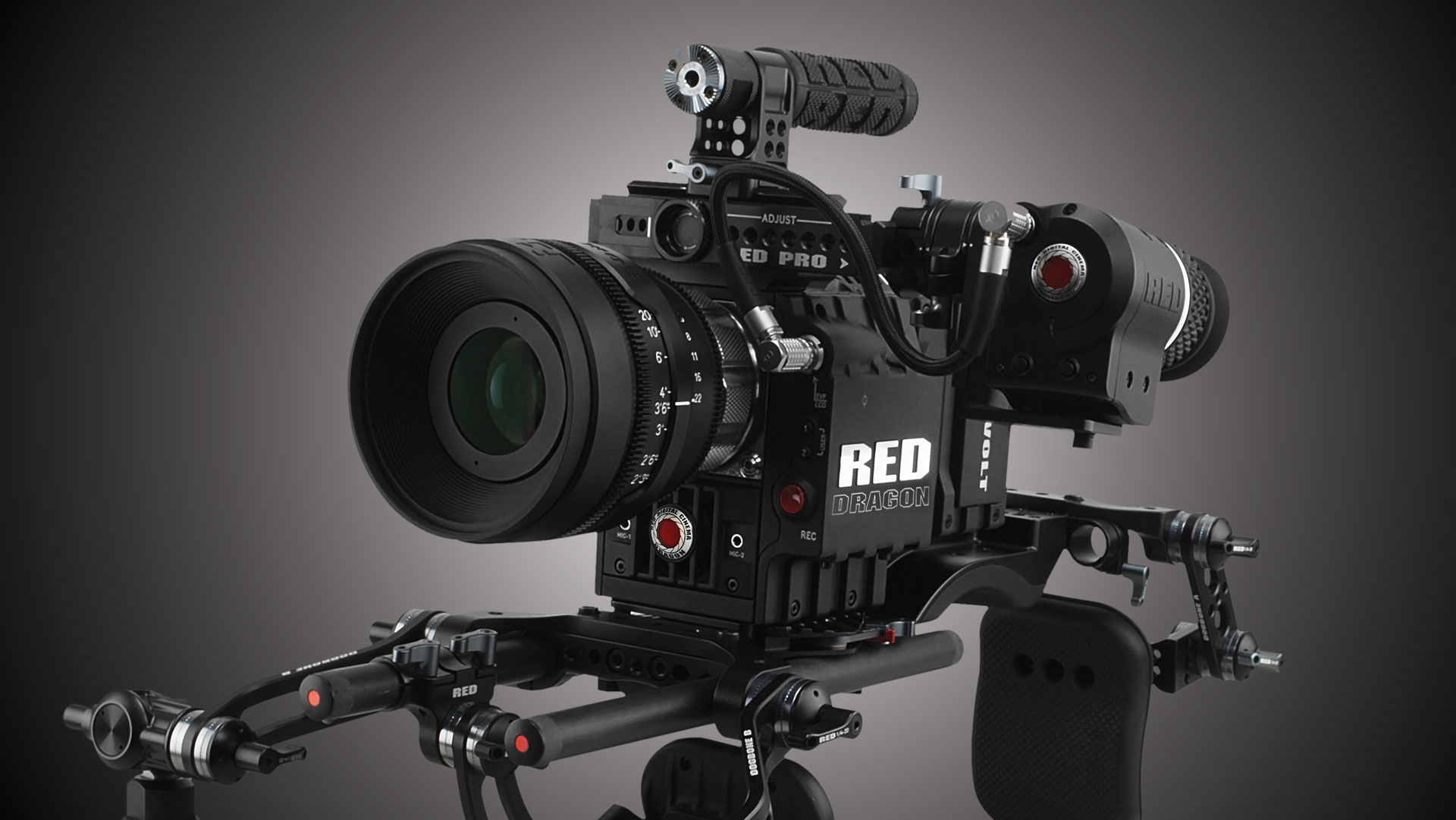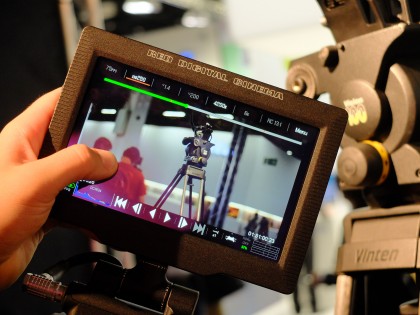Shooting video with stills cameras? You're doing it wrong, says Red
Red's pro cameras are so good you can save 19MP stills from their footage

Red cameras are modular systems – you choose a body, you choose a sensor, you pick a lens mount and then a clip-on monitor. Anyone who can remember far enough back (not us, obviously) will see the parallels with Hasselblad's old 120-format film SLRs.
Red makes two bodies – 'Scarlet' is the cheaper option, and 'Epic' is the high-end version. The new sensor, which was being showcased for the first time at Photokina, is the Red Dragon. Put the two together and you get the Epic Dragon, the camera being shown to us at the Red stand.
Stills from movies
The principle is simple. Red claims the quality of the footage captured by the Red Dragon sensor is so high you can just pull out top-quality stills – stills good enough to go head-to-head with any stills camera of equivalent resolution.
We're not talking about the grainy, over compressed JPEGs you might have seen pulled out of clips from consumer cameras. The Red Dragon's footage is saved as raw data, and each frame is a raw file, which you then edit in the REDCINE-X PRO software supplied with the cameras.
This means you get post-shot white balance control, for example, so you don't have to spend all that time getting the white balance right on location.
Lay down a marker
But wait a minute. Is Red seriously suggesting you sit through hours of video, crawling through it frame-by-frame to find the one you want?

No, because as you film you can press a button on the camera to add a marker to the timeline at that point, and when you open the clip in the Red software, it displays stills from those marked points. And if the moment's not quite perfect, you can jog forward or back one frame at a time to find one that is.
Get daily insight, inspiration and deals in your inbox
Sign up for breaking news, reviews, opinion, top tech deals, and more.
Frightening facts
The Red cameras shoot 6k video, which has a resolution of 6144 x 3160 pixels (hence the 19-megapixel figure). It uses a sensor somewhere between APS-C and full-frame in size, though the dimensions will depend on the aspect ratio and resolution you choose.
The sensor is developed by Red itself. It saves 16-bit raw data (most DSLRs shoot 12- or 14-bit raw files), and Red claims a dynamic range of 16.5 stops – so that means fewer blocked shadows and blown highlights.
Pro appeal
It's the idea of taking stills from video clips that Red is pushing at Photokina. They backed it up with live photography sessions and on-the-spot printing via large-format Epsons. The results looked pretty spectacular.
But the most spectacular thing of all is the Epic Dragon's frame rate. It can shoot this amazing 6K raw footage at an even more amazing 100 frames per second. It's saved on to a proprietary SSD card – Red showed us a 512Gb card which slides in and out of a slot on the camera just like a regular memory card.
Pro photographers are increasingly being asked to capture video as well as stills, but Red is also targeting the sports/action market. The Canon EOS 1DX isn't bad at 12 frames per second, the brand new Samsung NX1 can shoot at 15 frames per second, but none come close to the 100fps of the Epic Dragon.
As long as you got this camera pointed in the right direction, there is no way you can miss the shot!

Rod is an independent photographer and photography journalist with more than 30 years' experience. He's previously worked as Head of Testing for Future’s photography magazines, including Digital Camera, N-Photo, PhotoPlus, Professional Photography, Photography Week and Practical Photoshop, and as Reviews Editor on Digital Camera World.